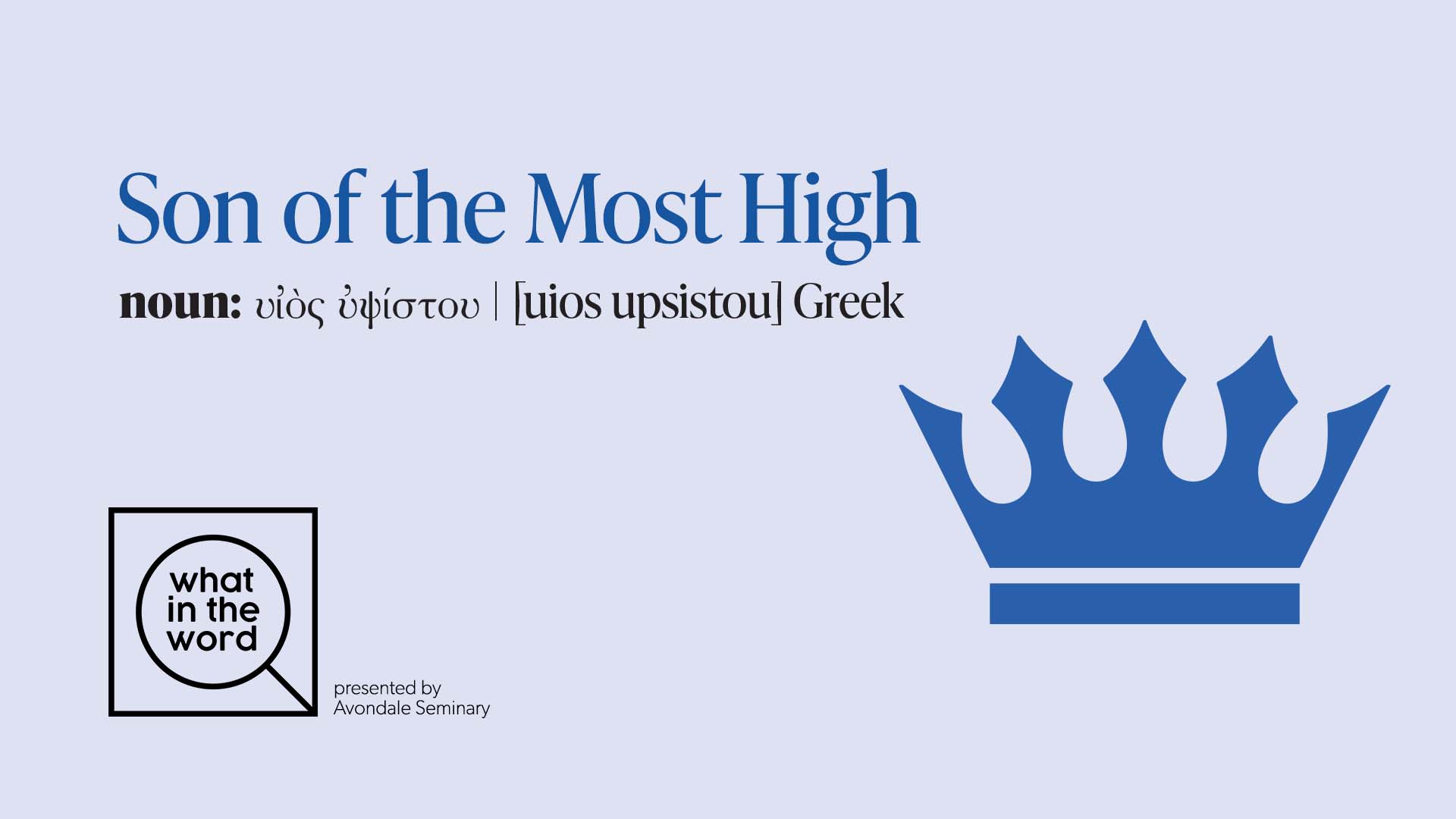The title “Son of the Most High” (uios upsistou)—instead of being one of the most distinguished of the titles of Jesus—actually unites Him with His followers.
The title is mainly found in Luke; it is found only one other time, in the Gospel of Mark (Mark 5:7). We first encounter this title when the angel, Gabriel, proclaims to Mary that Jesus will be called Son of the Most High (Luke 1:32). In the Greek text, the title “Son of the Most High” is significant as it seems to align with the Greco-Roman convention declaring their kings or emperors the son of a deity.1 For example, Plutarch writes how Alexander the Great was a child of a god (Plutarch, Alex. 3), or Seutonius declares that Augustus is a son of Apollo (Seutonius, Aug. 94). Moreover, the term as it appears in Qumran texts refers to a regal figure.2 Thus, through the title “Son of the Most High”, we expect Luke to declare the supernatural superior pre-eminence of Jesus.
The title “Son of the Most High”, instead of being a declaration of the superiority of Jesus, is one title that unites Jesus with His true disciples. In Luke’s Sermon on the Mount, we read:
“But love your enemies, and do good, and lend, expecting nothing in return, and your reward will be great, and you will be sons of the Most High, for he is kind to the ungrateful and the evil” (Luke 6:35, ESV).
The call to love your enemies and do good expecting nothing in return is counter-cultural to the first-century Mediterranean worldview but in line with Jesus’ programmatic sermon in Nazareth. Quoting the book of Isaiah, He said:
“The Spirit of the Lord is upon me, because he has anointed me to proclaim good news to the poor. He has sent me to proclaim liberty to the captives and recovering of sight to the blind, to set at liberty those who are oppressed, to proclaim the year of the Lord’s favour” (Luke 4:18,19, ESV).
We appreciate Jesus’ programmatic mission through the miracle narratives of Jesus. Luke narrates 21 miracles of Jesus. In all those miracles, Jesus helps the marginalised, hopeless and oppressed victims. Some examples are the woman bent over (Luke 13:10-18), the leper (Luke 5:12-14) or the woman with a haemorrhage (Luke 8:43-48). None of the recipients of the miracles could repay Jesus for His goodness.
We also see Jesus loving the enemies of society in His association. He was called a friend of tax collectors and of sinners (Luke 7:34). He takes Levi, a tax collector, among His disciples (Luke 5:27-32). A sinful woman kisses and anoints His feet (Luke 7:38). Jesus eats with Zacchaeus, the tax collector (Luke 19:10).
Like Jesus, we are called to love the desperate, hopeless and marginalised. We are called to reach out, care and love those who cannot repay us. We are called to associate, eat and mingle with those who are unvalued, friendless or forsaken, expecting nothing in return.
The title “Son of the Most-High” (uios upsistou) is not a title of Jesus depicting His divine pre-eminence. Instead, it’s a designation of a special people of God whose mission is to love, care and sacrifice for the marginalised, hopeless and oppressed.
Hensley Gungadoo is a Lecturer at the Avondale University seminary.
1. Andrew Lincoln, “Luke and Jesus’ Conception: A Case of Double Paternity?,” Journal of Biblical Literature 132, no. 3 (2013): 653.
2. Bock, Luke, 1. Howard Marshall, The Gospel of Luke, New International Greek Testament Commentary (Wm. B. Eerdmans Publishing Co, 1978), 67.






